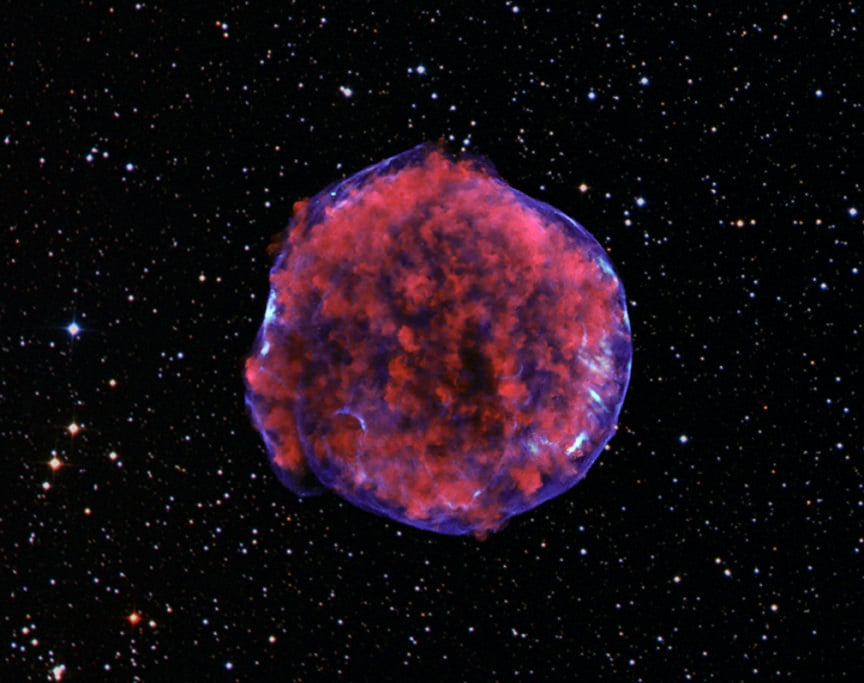[/caption]
The Chandra X-Ray Observatory has taken a brand new, deep look inside the Tycho Supernova Remnant and found a pattern of X-ray "stripes." The three-dimensional-like nature of this incredible image notwithstanding, nothing like these stripe-like features has ever been seen before inside the leftovers of an exploding star, but astronomers believe they could explain how some cosmic rays are created. Additionally, the stripes provide support for a theory about how magnetic fields can be dramatically amplified in supernova blast waves.
Cosmic rays are made up of electrons, positrons and atomic nuclei and they constantly bombard the Earth. In their near light-speed journey across the galaxy, the particles are deflected by magnetic fields, which scramble their paths and mask their origins. Supernova remnants have long been thought to be the source of cosmic rays, up to the "knee" of the cosmic ray spectrum at 10^15 eV, but so far, no specific sources have been located.
In 2010, the Fermi gamma ray telescope found evidence
– also from supernova remnants – where radiation is emitted that is a billion times more energetic than visible light.
[caption id="attachment_84399" align="aligncenter" width="580" caption="High Energy Stripes in the Tycho Supernova Remnant. Credit: NASA/CXC/Rutgers/K.Eriksen et al"]
[/caption]
But the stripes seen by Chandra, shown above in high-energy X-rays (blue), are thought to be regions where the turbulence is greater and the magnetic fields more tangled than surrounding areas. Electrons become trapped in these regions and emit X-rays as they spiral around the magnetic field lines. Regions with enhanced turbulence and magnetic fields were expected in supernova remnants, but the motion of the most energetic particles -- mostly protons -- was predicted to leave a messy network of holes and dense walls corresponding to weak and strong regions of magnetic fields, respectively.
Therefore, the detection of stripes was a surprise.
[caption id="attachment_84400" align="aligncenter" width="580" caption="Schematic Illustration of the Tycho Stripes. Credit: NASA/CXC/M.Weiss."]
[/caption]
The size of the holes was expected to correspond to the radius of the spiraling motion of the highest energy protons in the supernova remnant. These energies equal the highest energies of cosmic rays thought to be produced in our Galaxy. The spacing between the stripes corresponds to this size, providing evidence for the existence of these extremely energetic protons.
"We interpret the stripes as evidence for acceleration of particles to near the knee of the CR spectrum in regions of enhanced magnetic turbulence, while the observed highly ordered pattern of these features provides a new challenge to models of diffusive shock acceleration," writes Kristoffer A. Eriksen and his team in their paper,
"Evidence For Particle Acceleration to the Knee of the Cosmic Ray Spectrum in Tycho's Supernova Remnant."
Source:
Chandra
 Universe Today
Universe Today
